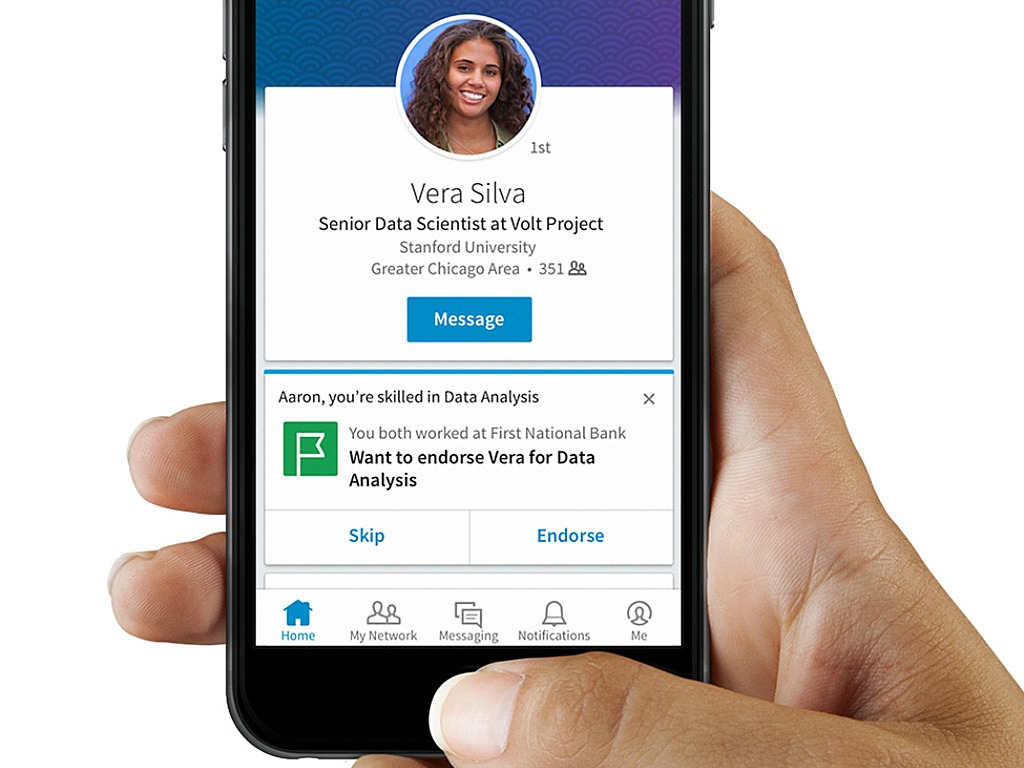
October 24, 2016: LinkedIn’s popular Endorsement feature is getting a revamp, according to an update posted to LinkedIn’s official blog.
The new system will more accurately surface the most relevant recommendations from peers, employers, and others who know the member.
For example, if a LinkedIn user is endorsed by two other users for the skill set “Java,” and only the first of these users has deep experience with Java, the recommendation of the second user will be discounted relative to the first. The objective here is to surface the most relevant and trustworthy recommendations for the skills each user wishes to highlight:
Our solution not only serves endorsements at a faster speed, but also allows us to deliver more insights to members based on their connections and skills. We believe that our new Endorsements infrastructure lays the groundwork so that we can eventually meet the goals mentioned above.
For those of a technical bent, LinkedIn’s engineers have published two documents detailing the technical changes to LinkedIn’s backend infrastructure behind the update; you can inspect them here:
Rethinking Endorsements Infrastructure, Part 1
Rethinking Endorsements, Part 2: The New Endorsements Infrastructure
Why this matters
Peer recommendations are considerably more powerful than “likes” and “follows,”
Chances are that you’ve worked with a wide variety of other professionals in your career, and chances are very good that these same folks are on LinkedIn. Like you, these people are on the network to build and extend their influence, and recommendations provide a powerful way to establish their real-world credibility.
We know of at least one professional who, when looking for a new job, reached out to a former employer by providing a great recommendation to the CEO of the firm he’d worked for few years prior. Within an hour, he’d received back both a personal “thank you” from the CEO and an offer to consult with that same firm. One year later, he became a full-time employee again with a higher salary and a much better job. The whole process began with a simple recommendation made on a Saturday.
Why is recommending other people so effective in terms of career advancement? Because everybody wants a shout-out and people really pay attention to recommendations you give them. And recommending people also shows that you – as a professional – are a giving person who cares about good people and isn’t afraid to provide them the props they’ve deservedly earned.
LinkedIn’s continuing investment in its Endorsements feature augers well for this form of social proof. Peer recommendations are considerably more powerful than “likes” and “follows,” and this feature will continue to distinguish LinkedIn as it competes with general purpose social networks (such as Facebook) aiming to colonize the business networking market.
- 10 Mistakes to Avoid When Using QR Codes for Marketing - September 20, 2023
- Kevin Lee on How AI Changes the SEO Landscape - August 31, 2023
- The Power of Compound Marketing: Kevin Lee Presents @ 1MediaWorld 2023 Global Conference - March 7, 2023
